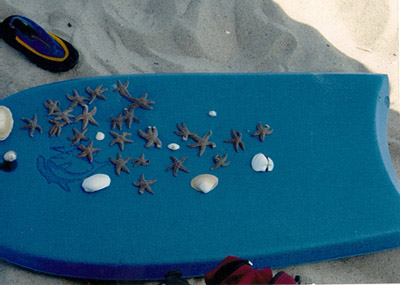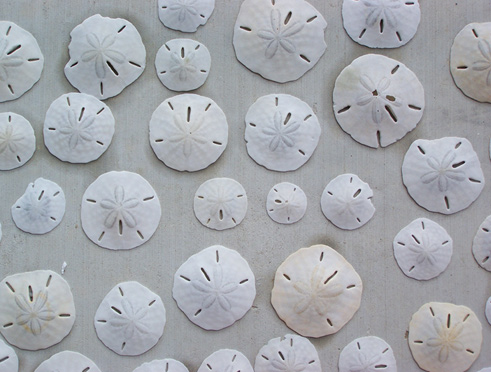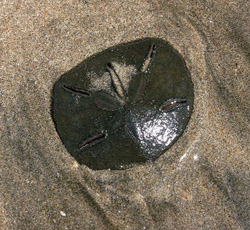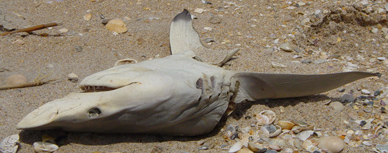|
Cape Cod Sea Life
The Cape Cod sea life is diverse and plentiful. These waters are nutrient rich and are home to a huge number of species like the seal in the above photo. In June, seals can be seen lounging in the sun just off the coasts of Chatham and Monomoy (where that photo was taken). Most of the time, the type you will see on Cape Cod are Harbor seals. You can spot them in harbors (especially the commercial fishing harbors of Chatham and Provincetown), or hauled out onto the beaches in the off-season. Sometimes, Grey seals are even spotted around Chatham and Nantucket - the southernmost breeding ground for these mammals. Adult harbor seals have gray, brown or black spots, are around 5-6 feet long, and can weigh between 150 and 200 pounds. Grey seals are brown or silver with black splotches and are much larger than harbor seals, ranging from 7 to 8 feet long. The males can weigh 400 pounds, while the larger females can top 700 pounds. An easy way to tell them apart is by the shape of their heads. The Grey seals have elongated heads, while the Harbor seals have a much rounder profile. While I visited Monomoy a few years ago, I saw huge numbers of Grey seals in the waves just off the beach. We walked for a long time and the seals were following us down the shoreline. When we stopped---they stopped. I guess they were as curious about us, as we were about them! 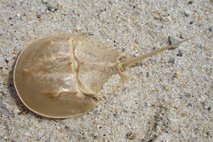
It turns out, that all these "tiny crabs" were actually "castings." When a horseshoe crab grows, it sheds (molts) its outer skin (or shell) like a snake does. When it is finished, the result is a casting that looks exactly like a tiny horseshoe crab.
Cape Cod sea life has another interesting member. The starfish.Starfish, which are neither a star nor a fish, are commonly called "Sea Stars" in other parts of the world, but in the states, they are called starfish. There are over 1,800 known species of starfish, and they live in all of the world's oceans but they are relatively rare North of Massachusetts. The best time to hunt for starfish is at low tide, in the crannies and crevices of tide pools, under or along the sides of rocks and even in empty shells. Starfish are carnivores and will prey on mollusks (oysters, quahogs, and mussels) and crustaceans (barnacles, crabs, and shrimp). An interesting fact about starfish: They are capable of asexual reproduction. This is achieved when an arm of the animal is removed, (with some of the central disc attached), and a new independent star fish is formed. 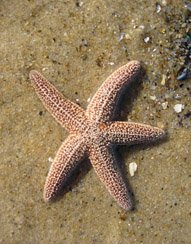
Finally, fisherman started watching the Discovery Channel and stopped accidentally doubling the number of starfish. Possibly the most dangerous of the starfish is called an Asterias. This starfish will twist its body backward and completely succumb the creature it's devouring. It pushes its stomach through to the outside of its body and takes the other animal apart. It then injects the animal with a digestive juice that completely kills the animal. These animals are known to live on the ocean floors, especially in rocky areas. There are two forms of this creature that live in waters surrounding the United States. Asterias Forbesi are part of Cape Cod sea life and are bright orange, with voracious appetites. The Asterias Vulgaris also live in the Cape Cod area. These animals are yellow in color. A funny story about Cape Cod starfish: One year, we decided to let 2 of our friends join us on our trip to the Cape. My friend Lisa kept saying, "All I want to do is find starfish..." I told her she would be disappointed because there are no starfish in Cape Cod. Once again, or so I thought... My favourite items of Cape Cod sea life by far, are sand dollars.
If I had a real dollar for every sand dollar I have collected over the years in Maine, Cape Cod and in Florida, well I'd be rich! By the time they are washed onto shore, they are no longer alive and have turned a whitish colour. Since the sand dollar lives in sandy locations, anyone who would like to collect their shells should comb beaches as the tide recedes. The very best time for collecting is after a heavy storm, as many of the shells that have died are dredged up by the increased wave action.
When I surf in Florida, I see them all the time but on Cape Cod, they are a less common sight. Oh, they are still there, you just don't see them as much because the water is a little murkier than down south! Up for a swim? Another part of Cape Cod sea life are birds. There are so many different species of birds here that it is truly a birder's paradise. If you are into birdwatching and would like to know the best spots on Cape Cod to see birds (and which ones you'll see) then visit the
Cape Cod Birding page.
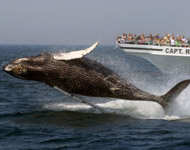
Many tourists come to Cape Cod just for the extraordinary whale watching tours that depart from Hyannis or Provincetown. For more on this topic, check out the Return to Cape Cod Insider Home from Cape Cod Sea Life
|





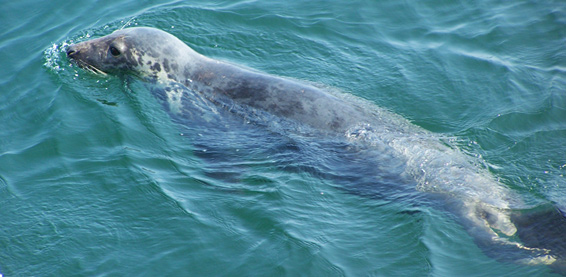
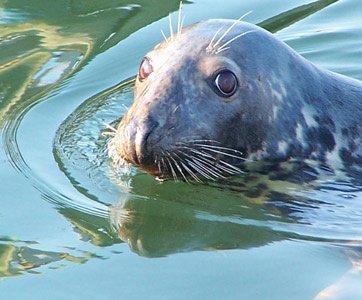
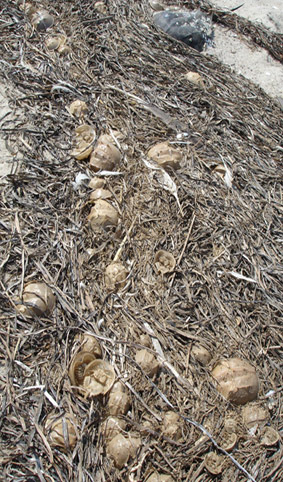 When I first saw this, I thought some horrible accident or disease caused the death of all these little sea creatures.
When I first saw this, I thought some horrible accident or disease caused the death of all these little sea creatures.